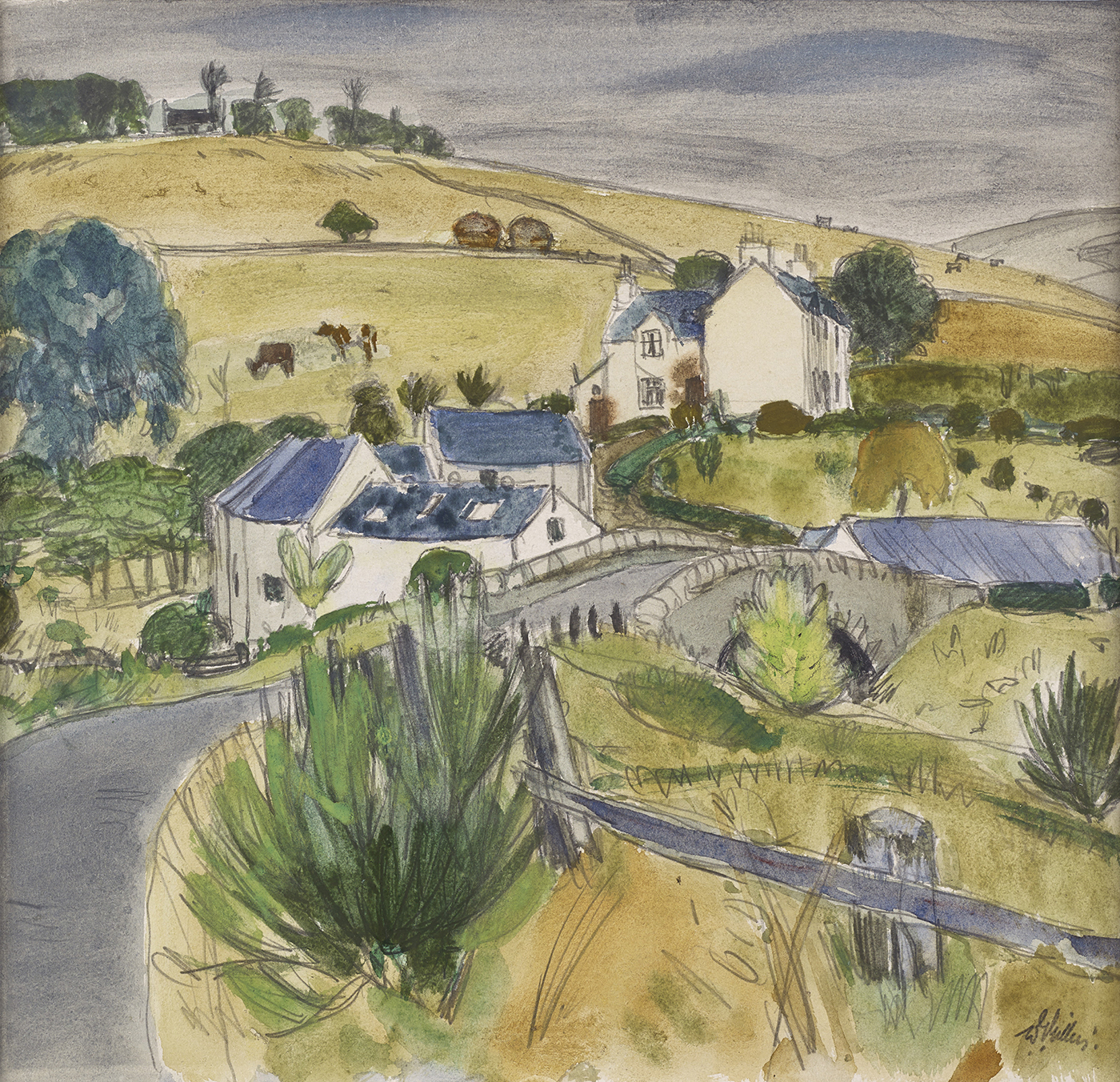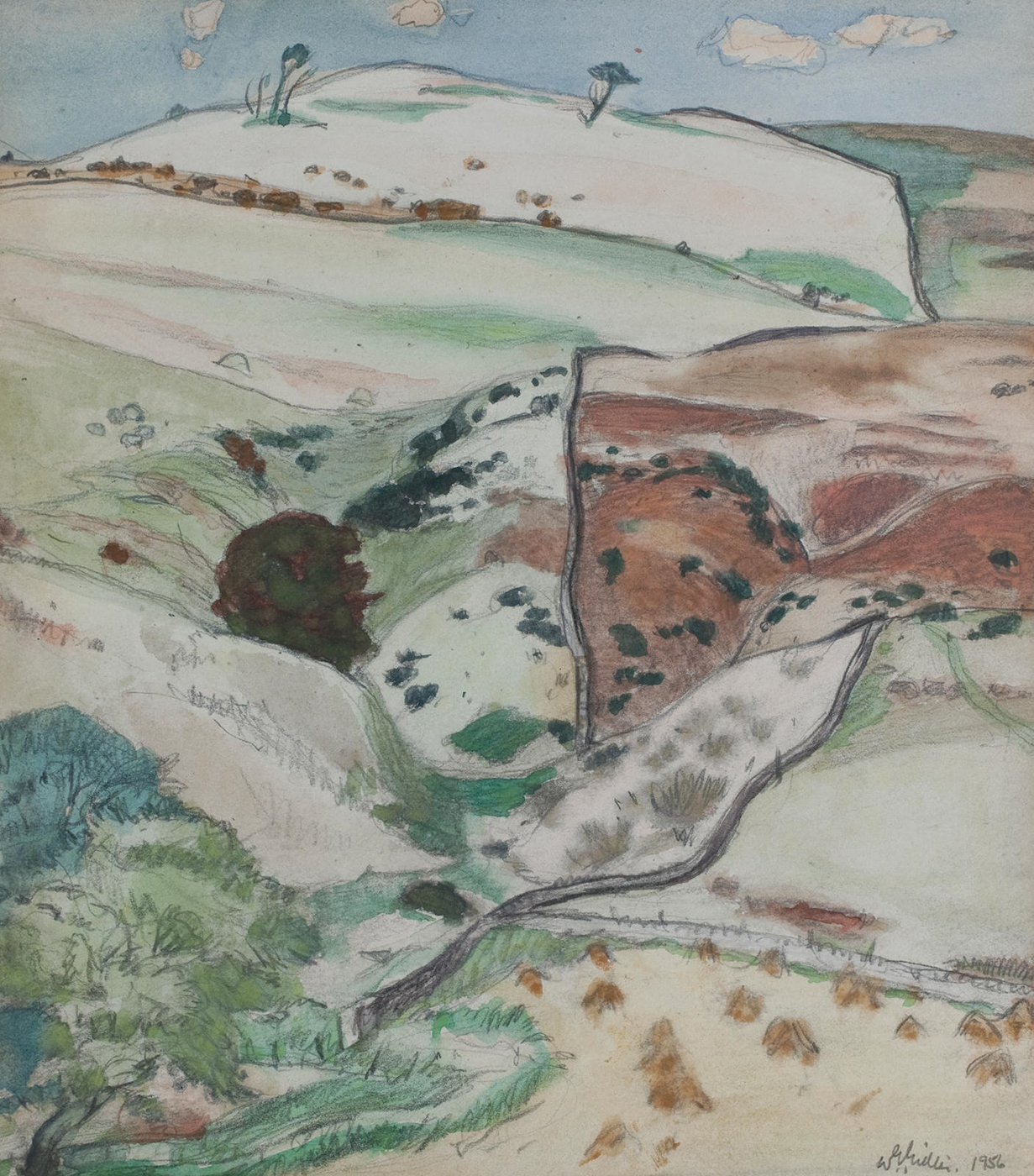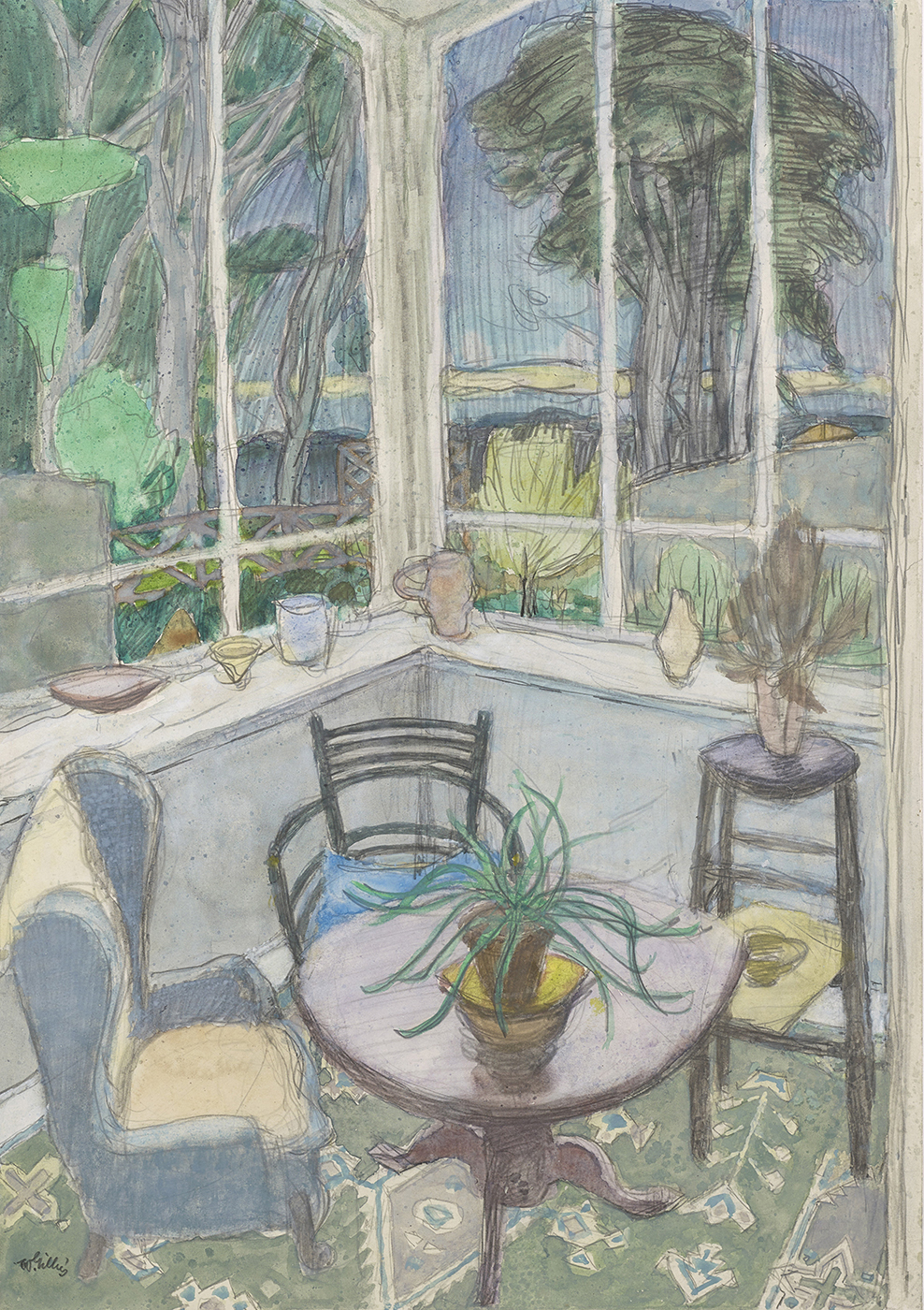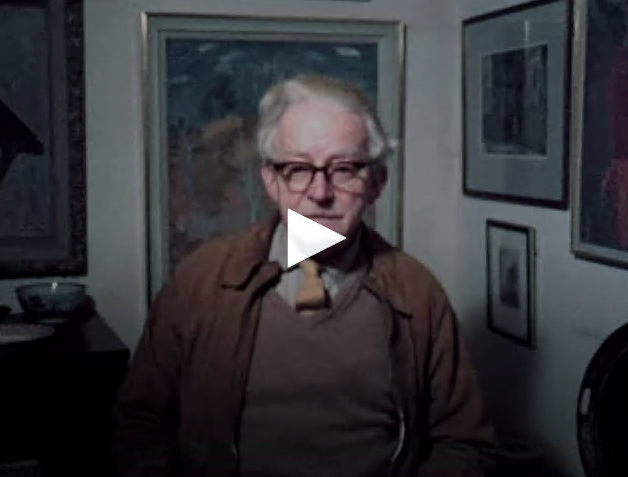William Gillies was an influential teacher on several generations of painters and is widely regarded as one of Scottish art’s most beloved sons. He was perhaps The Scottish Gallery’s most important artist holding seven exhibitions with the Gallery during his lifetime. Gillies’ first ever show was in the front window of a Haddington watchmaker’s in 1920. Unbeknown to the locals at the time, it was the start of an artistic career for one of the most significant British artists of the 20th century.
Please discover more information on the artist below and his particular engagement with the landscape around his home in Temple. We are also delighted to share the film Still Life with Honesty, directed by Bill Forsyth in 1970.


Elizabeth Blackadder, 1991He was special to me. When I was a young student in 1949, and being a woman, I got no feeling from Gillies that I was in any way different – you were a painter… That sense of there being no difference may not seem very much, but I think it was something very special to him and important to me as a painter, right from the beginning. I was lucky to have such encouragement.
The Move to Temple

William Gillies, 1970We made the shift to Temple just after the outbreak of war in 1939 and that was another important landmark for me as an artist. I needed to live in the landscape I was painting and Temple, situated within a mile or two of the fine, bare Moorfoot Hills and with the rich agricultural countryside of Midlothian within easy reach in the other direction, was just what I wanted. I had the whole Border countryside full of subject matter open to me
The landscape between Edinburgh and the Borders changes at every turn. Roads follow river valleys, passing through towns and villages, and wind steeply up on to high moorland, battered by wind, rain and snow. Gillies went by car or motorbike from his cottage in Temple and explored again and again the landscape of the area, stopping at the side of the road wherever and whenever something caught his eye. One of his favourite views is one taken from the side of the road, looking across to the valley on the opposite side.

David Michie, 1991Gillies was a very remarkable artist – someone belonging to his time – a painter interested in the expressive qualities of shape, tone and colour for their own sake and ‘seeing the significant in the ordinary’.

Guy Peploe, 2020His studio had a wide picture window which provided the subject for many paintings looking out, particularly in the winter. But it was outside that he was in his element, driving out in his Ford Grenada to revisit a promising spot on the Gala Water or along the escarpment of the Moorfoot Hills, seeing something that others would miss: the straight course of an ancient dyke, a farmhouse half-hidden in a copse of pines, the water of a burn quickening into a ravine.
Still Life with Honesty - gillies on camera
We are delighted to share the link below to a video on the National Library of Scotland website. The film, Still Life with Honesty, was directed by Bill Forsyth in 1970 and features William Gillies speaking to the camera at his home in Temple. It gives a fantastic insight into the man himself whilst he discusses his life as a painter. Enjoy!
We would like to thank the Royal Scottish Academy of Art & Architecture for their kind use of archive images. Thank you also to the National Library of Scotland to allow us to share this special film.







